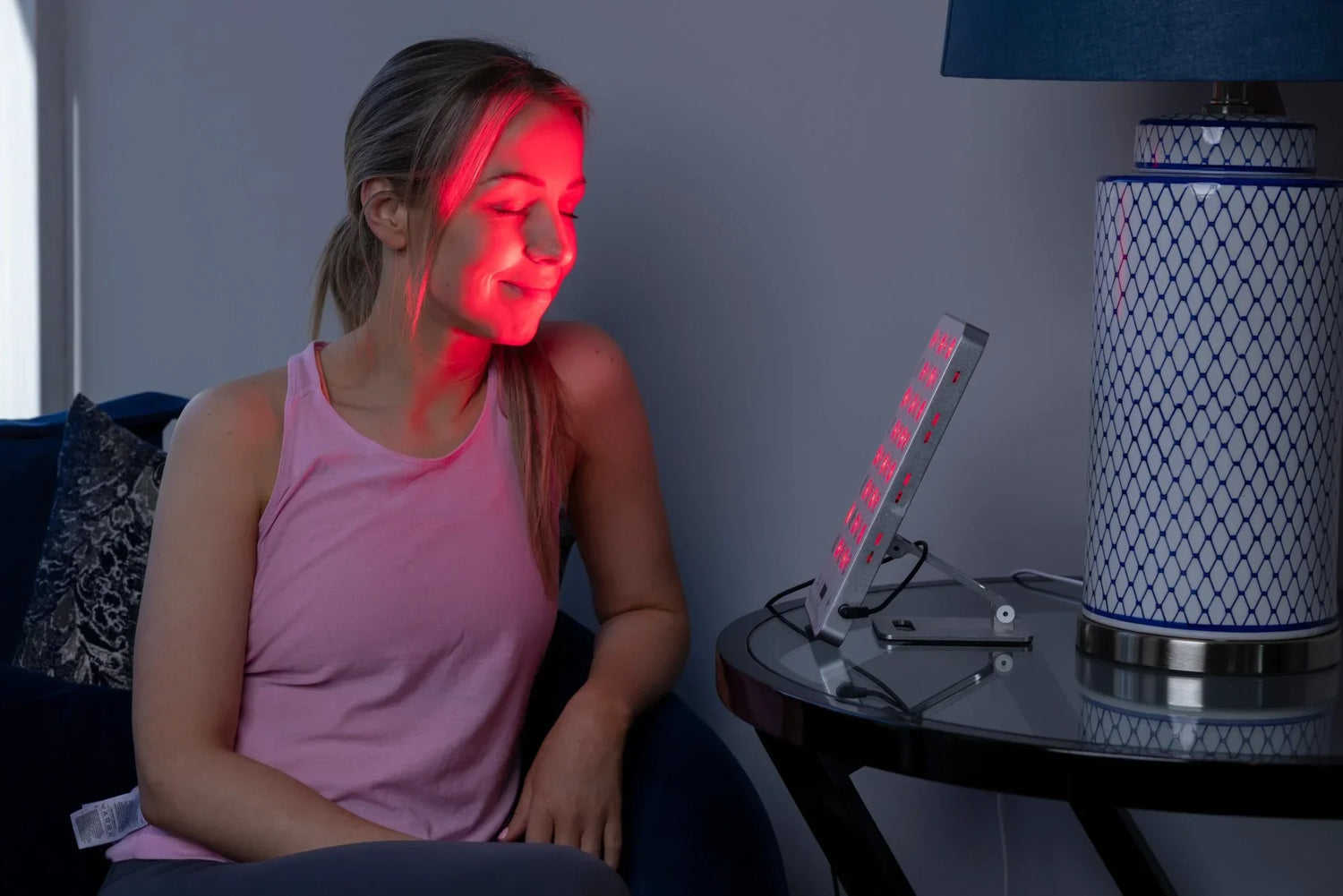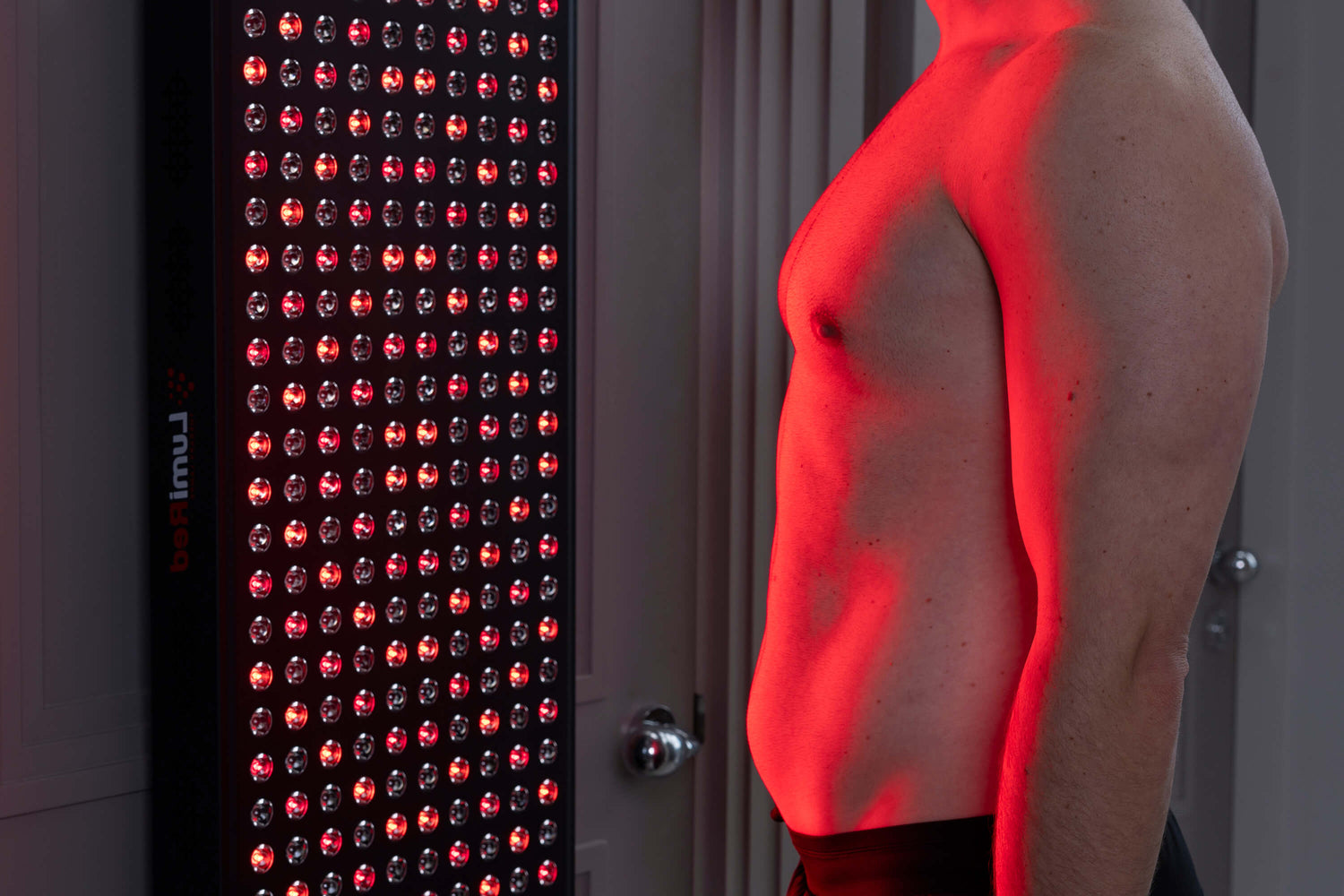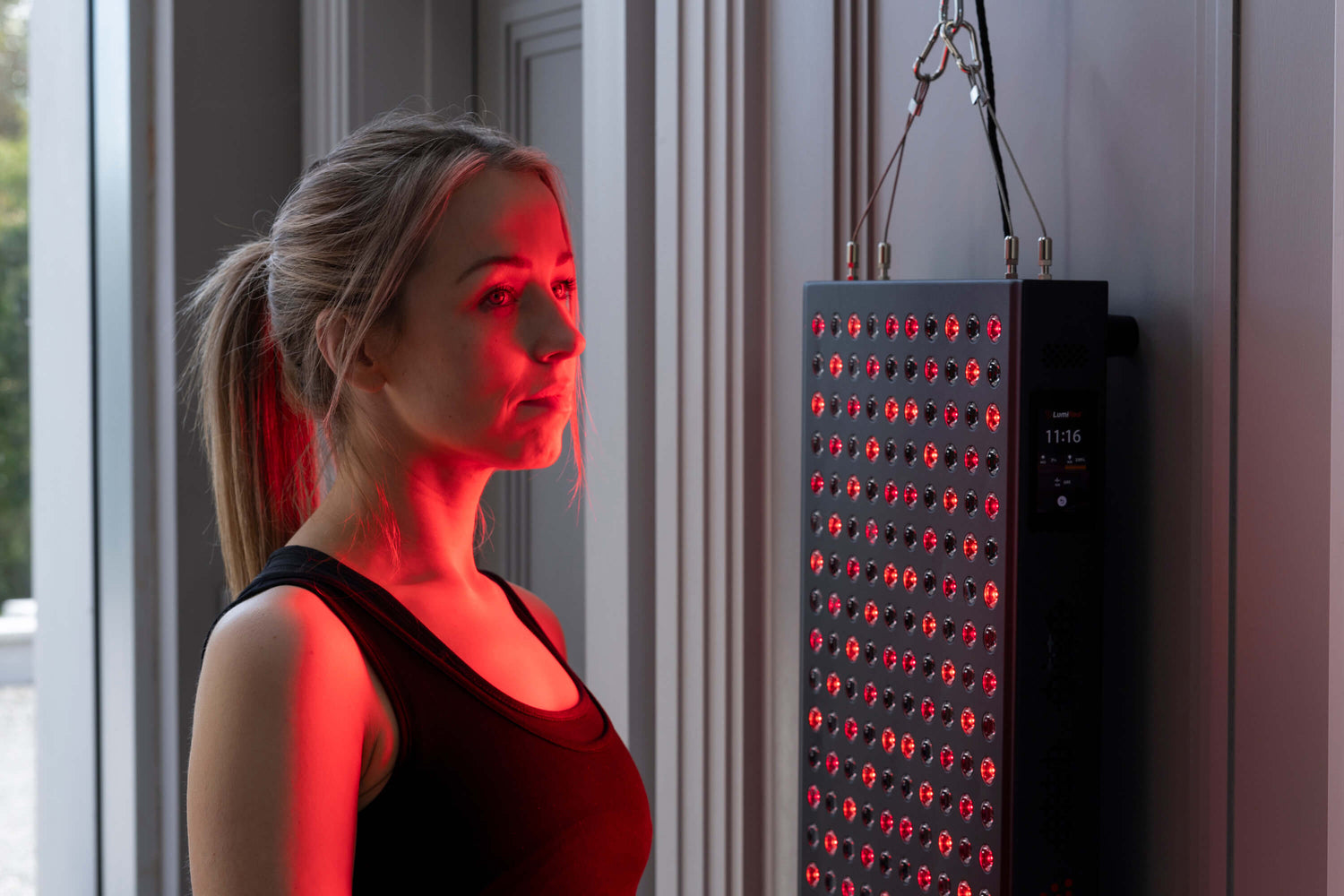Neuropathy is the term that refers to disorders resulting from damage to the peripheral nervous system, and it means the nerves don’t work properly. Causes of neuropathy are numerous including diabetes and metabolic syndrome, autoimmune diseases, infections, tumors, bone marrow disorders, alcohol use disorder, certain medicines, exposure to toxins, and nutritional deficiencies, just to name a few.
People with neuropathy experience symptoms such as sharp or burning pain, muscle weakness, and lack of coordination, all of which significantly affect their quality of life. There are several treatment options and approaches to help manage neuropathy and the symptoms it causes. One of these approaches is red light therapy.
People suffering from neuropathy usually find their symptoms are better in summer months or when in warmer climates. Red light therapy mimics the beneficial wavelengths of light in the sun, allowing the same benefits to be felt all year round.
This article aims to explore the potential efficacy of red light therapy for neuropathy and how it works. Read on to learn more.
Does Red Light Therapy Help Manage Neuropathy?
Red light therapy is effective in the management of neuropathy. A study from Laser Therapy showed that low-level laser therapy was associated with a significant reduction in pain among people with peripheral neuropathy caused by type 2 diabetes.
Most studies and reviews about the efficacy of red light therapy for neuropathy focused on patients with diabetes. One of them is a systematic review of Diabetes and Metabolic Syndrome, which confirmed that low-level laser therapy exhibits a positive effect on the management of diabetic neuropathic pain.
Red light therapy is also effective for patients with peripheral somatosensory neuropathy. Evidence shows the therapy can improve the sensory function of these patients. That said, more research on this subject is necessary to elucidate the full potential and effectiveness of red light therapy for the management of neuropathy.
One study evaluated the effectiveness of red light therapy in the treatment of various health problems, including neuropathy. Results showed red light therapy could be effective for neuropathic pain through analgesic effects.
How Does Red Light Therapy Help Manage Neuropathy?
The available evidence confirms that red light therapy can, indeed, help people with neuropathy. More studies on this subject are necessary, though. Red light therapy works through several mechanisms of action, such as:
- Improved blood circulation: red light therapy encourages the release of nitric oxide (NO) in the bloodstream. Nitric oxide is a molecule that acts as a vasodilator i.e. dilates or widens blood vessels. With the increased production of NO, blood flow improves. This is essential for nourishing damaged nerves and facilitating their repair. One clinical trial revealed that red light therapy improved peripheral protective sensation and foot perfusion in patients with type 1 and type 2 diabetes through increased nitric oxide production.
- Antioxidant effects: oxidative stress decreases blood flow and reduces neuronal function, thereby contributing to neuropathic pain. Evidence confirms oxidative stress can contribute to persistent neuropathic pain by impairing the balance of anti- and pro-inflammatory cells. Red light therapy can exhibit antioxidant effects and thereby help manage neuropathy and pain that people experience. One study found that antioxidation induced by light-emitting diodes may lead to nerve regeneration.
- Anti-inflammatory effects: different causes of neuropathic pain are connected to excessive inflammation in both the central and peripheral nervous systems. This leads to both initiation and maintenance of persistent pain that strongly affects a person’s quality of life. Inflammation is a common factor in neuropathic conditions, but red light therapy has anti-inflammatory properties. This therapy can alleviate inflammation in tissues and thereby help treat neuropathy or pain you experience.
- Improved nerve function: red light therapy can stimulate nerve regeneration and repair by supporting the production of factor growths. More precisely, this kind of therapy helps restore nerve function and aids management of neuropathy.
- Increased production of Schwann cells and fibroblasts: in order to restore nerve function, it is essential to fix the gap between damaged tissue and healthy nerve cells. Red light therapy stimulates Schwann cells (peripheral nervous system cells that insulate nerve cells) and fibroblasts (important for tissue’s structural integrity). This is important because fibroblasts interact with Schwann cells to promote healing mechanisms, alleviate inflammation, and support the restoration of neuron function.
- Cellular metabolism boost: mitochondrial dysfunction is associated with neuropathy and neuropathic pain. That means cellular metabolism is impaired. Red light therapy helps improve cellular metabolism to boost energy production and improve recovery.
- Pain relief: the combined result of several mechanisms of action through which red light therapy works is the analgesic effect. Through analgesic properties, red light therapy can help alleviate pain and improve your quality of life.
Duration of Red Light Therapy Session for Neuropathy
Red light therapy is a practical option for people with neuropathy to improve their quality of life. The greatest advantage of red light therapy is that it doesn’t go by the “one size fits all” rule. The duration of one session depends on factors such as the severity of your condition and the individual response to the treatment. The standard treatment plan may involve daily sessions over several weeks. In most cases, the sessions last 10 to 20 minutes. You will achieve the best results if you don’t skip sessions. Consistency is crucial for optimal results from red light therapy.
You should do red light therapy for a minimum of one month.
Why one-month minimum? Well, red light therapy is not a quick fix. It works through multiple mechanisms of action, as mentioned above. These mechanisms of action aim to fix the factors that contribute to neuropathy and worsen your pain. Red light therapy works on a cellular level. It takes time for nerve cells to repair themselves and regenerate. However, all cells don’t repair and regenerate at the same time. For that reason, be consistent. That way, you allow cells to recover at their own pace.
How to Get Started with Red Light Therapy for Neuropathy?
Red light therapy offers many benefits ranging from neuropathy management to youthful and healthy skin. You’re probably eager to try it out but aren’t sure where to start.
At LumiRed you can schedule a phone consultation with our health professional who can advise on the best device to purchase for use at home, depending on your needs and goals. This allows you to perform your treatment in the comfort of your own home on a regular basis. Best of all, its simple, comfortable and has no side effects.
What to Expect During and After Red Light Therapy?
Red light therapy is a noninvasive approach meaning the whole process is painless. In fact it is comfortable with a mild comforting warmth being felt
Not only is a red light therapy session painless, but you may also feel calm and relaxed. Consider it a perfect opportunity to calm your mind and reduce stress too. A red light therapy session is also the perfect time to meditate. Doing so gives your body an additional wellness boost since meditation also relieves stress that worsens chronic conditions.
In addition to painless treatment and calming effects, you can expect your session to be safe. The treatment doesn’t cause side effects. There are no risks or complications that could arise during or after the treatment.
Red light therapy holds great potential in improving your quality of life, but it’s useful to have realistic expectations. As seen above, studies confirm that red light therapy can reduce neuropathic pain and help manage neuropathy in people with diabetes. However, it can’t eliminate it on its own. Red light therapy should be an adjunct therapy to this problem, not the only treatment approach. Successful management also depends on managing or treating the underlying cause of neuropathy.
Final Takeaway
Neuropathy is a painful condition that occurs due to a wide range of causes, including diabetes or carpal tunnel syndrome. People with neuropathies suffer from debilitating pain that restricts their flexibility, limits their movements, and severely impairs their quality of life. Red light therapy is an effective approach in the management of neuropathy, as confirmed by many studies. Several mechanisms of action are involved in the beneficial effect of red light therapy. The most important thing to keep in mind is that red light therapy sessions are painless, relaxing, and safe.
References
Colloca L, Ludman T, Bouhassira D, et al. Neuropathic pain. Nat Rev Dis Primers. 2017;3:17002. Published 2017 Feb 16. doi:10.1038/nrdp.2017.2
Cg SK, Maiya AG, Hande HM, Vidyasagar S, Rao K, Rajagopal KV. Efficacy of low level laser therapy on painful diabetic peripheral neuropathy. Laser Ther. 2015;24(3):195-200. doi:10.5978/islsm.15-OR-12
M A, Ummer V S, Maiya AG, Hande M. Low level laser therapy for the patients with painful diabetic peripheral neuropathy - A systematic review. Diabetes Metab Syndr. 2019;13(4):2667-2670. doi:10.1016/j.dsx.2019.07.035
Fallah A, Mirzaei A, Gutknecht N, Demneh AS. Clinical effectiveness of low-level laser treatment on peripheral somatosensory neuropathy. Lasers Med Sci. 2017;32(3):721-728. doi:10.1007/s10103-016-2137-y
Mansouri V, Arjmand B, Rezaei Tavirani M, Razzaghi M, Rostami-Nejad M, Hamdieh M. Evaluation of Efficacy of Low-Level Laser Therapy. J Lasers Med Sci. 2020;11(4):369-380. doi:10.34172/jlms.2020.60
Arnall DA, Nelson AG, López L, et al. The restorative effects of pulsed infrared light therapy on significant loss of peripheral protective sensation in patients with long-term type 1 and type 2 diabetes mellitus. Acta Diabetol. 2006;43(1):26-33. doi:10.1007/s00592-006-0207-5
Xu Y, Wu S, Wang J, et al. Oxidative stress induced by NOX2 contributes to neuropathic pain via plasma membrane translocation of PKCε in rat dorsal root ganglion neurons. J. Neuroinflamm. 2021;18, 106
Ishiguro M, Ikeda K, Tomita K. Effect of near-infrared light-emitting diodes on nerve regeneration. J Orthop Sci. 2010;15(2):233-239. doi:10.1007/s00776-009-1438-4
Ellis A, Bennett DL. Neuroinflammation and the generation of neuropathic pain. Br J Anaesth. 2013;111(1):26-37. doi:10.1093/bja/aet128
Yazdani SO, Golestaneh AF, Shafiee A, Hafizi M, Omrani HA, Soleimani M. Effects of low level laser therapy on proliferation and neurotrophic factor gene expression of human schwann cells in vitro. J Photochem Photobiol B. 2012;107:9-13. doi:10.1016/j.jphotobiol.2011.11.001
English K, Barton MC. HDAC6: A Key Link Between Mitochondria and Development of Peripheral Neuropathy. Front Mol Neurosci. 2021;14:684714. Published 2021 Aug 31. doi:10.3389/fnmol.2021.684714




